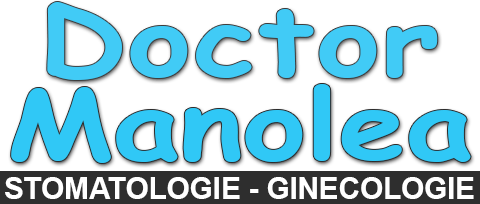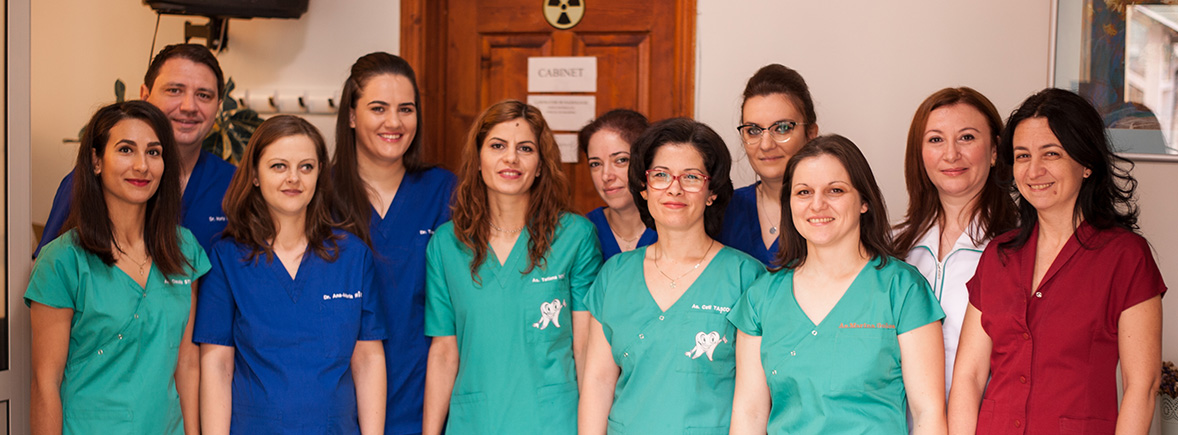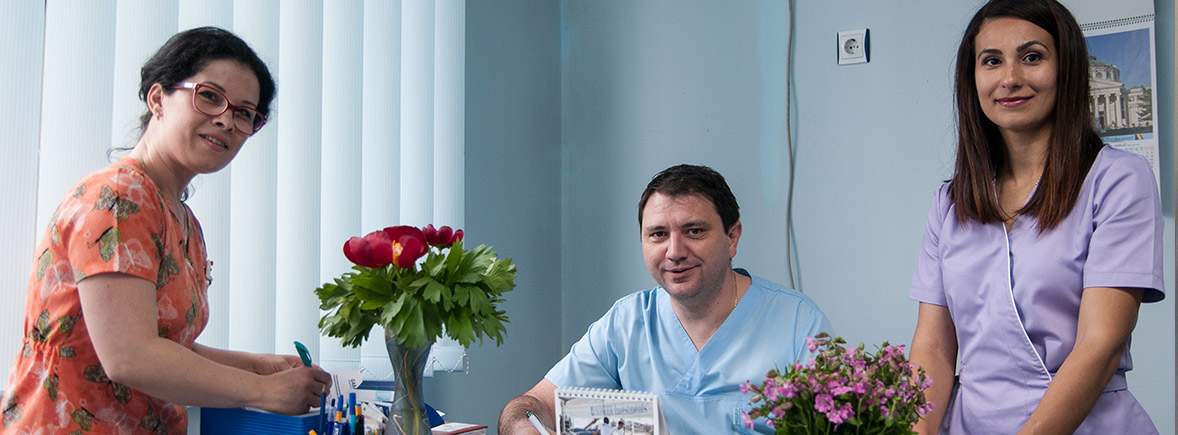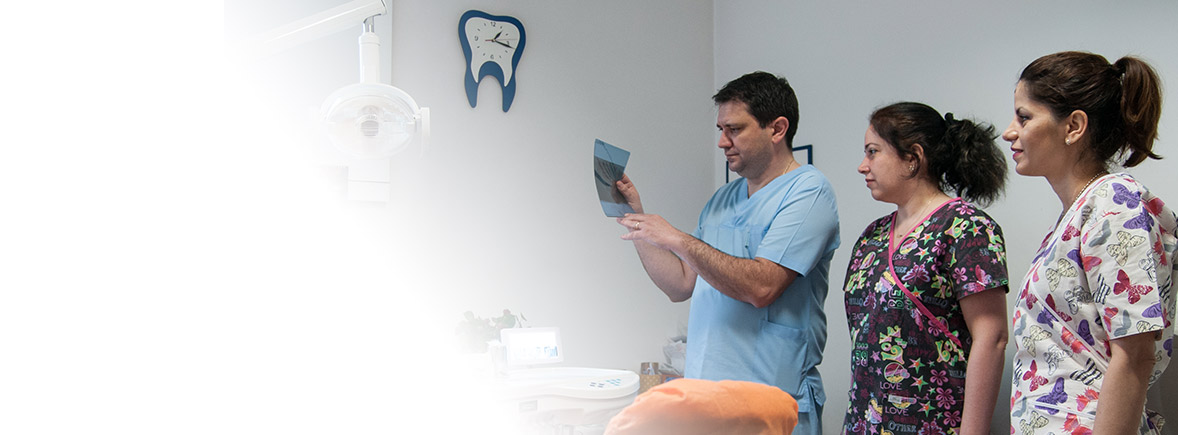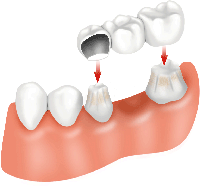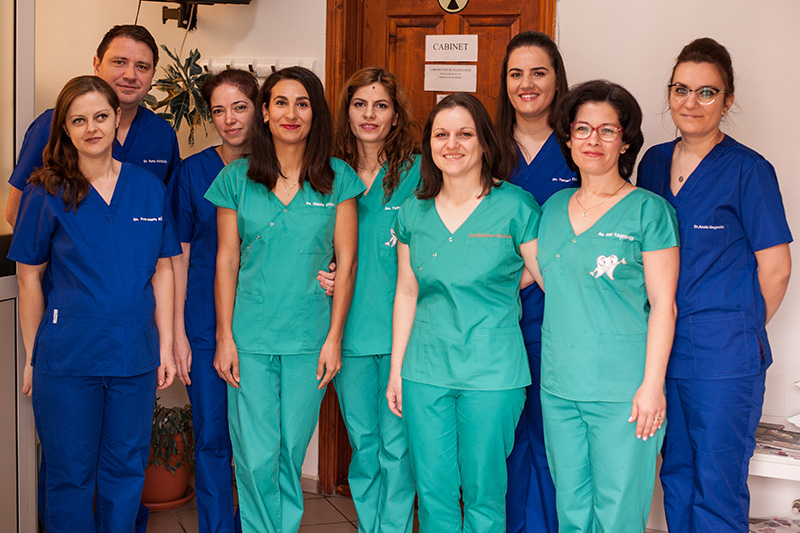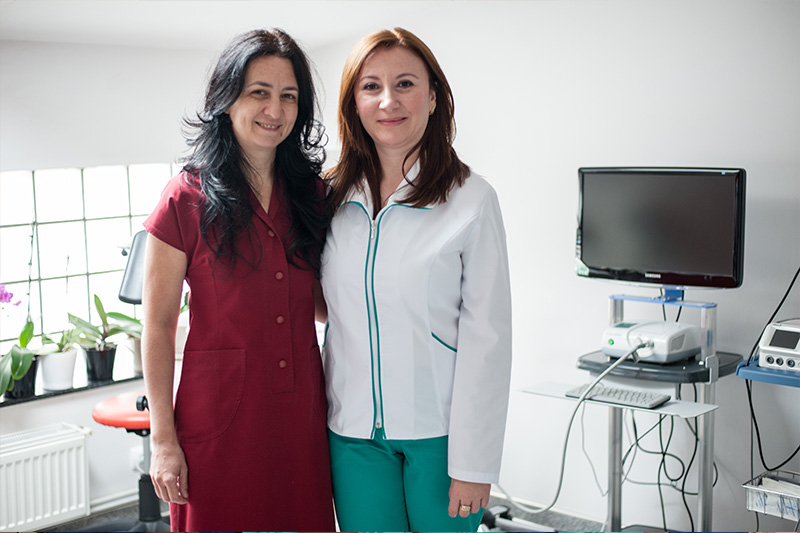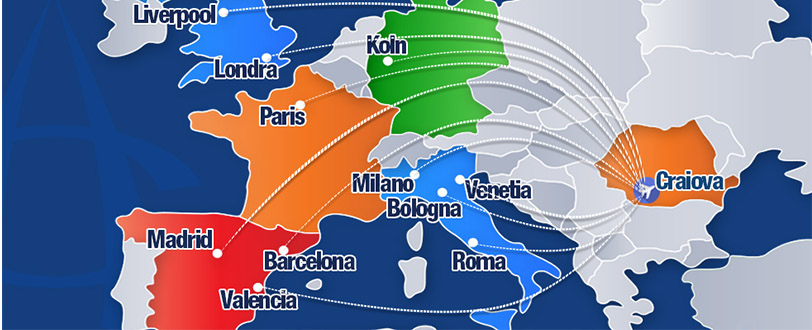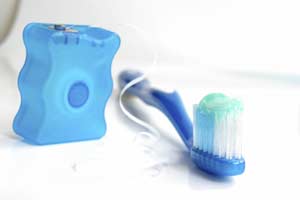Dentistry
With a dentistry tradition in our family for over 40 years, our team provides a wide range of dental treatments and restorations: crowns, bridges, dental implants, removable dentures, etc..
The Dentistry Department is currently coordinated by Prof. dr. Horia Octavian Manolea, MD, PhD.
Gynecology
The Obstetrics and Gynecology Department provides comprehensive outpatient services: specialist consultation, endovaginal and trans-abdominal ultraUltrasonography , video colposcopy, medical lab sample collection, etc.
The Department of Obstetrics & Gynecology is currently coordinated by ȘLecturer Dr. Maria Magdalena Manolea.
Replace your missing teeth!
Apart from the aesthetic and possibly masticatory problems, the loss of a tooth is the starting point of many other problems at the level of the oral cavity. Upon the loss of a tooth an imbalance occurs at the level of the oral cavity, imbalance which will increase over time.
Book now for a consultation with us!Medical Tourism
More and more patients from abroad are choosing to solve their medical problems in Romania, appreciating the professional services provided at extremely good prices compared to the prices in countries such as England, France, Italy, Germany, Spain, USA, Canada.
If you live abroad one of the main problems in solving your medical problems is the management of the time you can spend in Romania.
In order to take full advantage from our services during your stay in Romania please provide us in advance with as much detail of your problems as possible.
For dental services, a Panoramic Dental X-ray could be of great help. Please place it on a bright window and take a digital no-flash photo of it. Please send us the photo of the X-ray using the form din on the page dedicated to medical tourism.
Dentistry Services
Prosthetic Restorations On Implants
A dental implant is a screw that replaces the root of a lost tooth. The role of dental implants is to support dental prosthesis (crowns, bridges or dentures).
In our practice we use implants produced by Bredent medical GmbH & Co.KG and Sweden&Martina .
The dental implant can support either one strong and esthetic porcelain (ceramic) tooth or a dental bridge together with other implants.
Prosthetic Treatments
When dental caries have destroyed a large part of the tooth it is necessary to protect the healthy walls, by covering them with a dental crown. However, if the tooth cannot be saved and it is extracted, the empty space can be filled in either with a prosthesis (dental bridge), or with a dental implant. Dental crowns and bridges are fixed dental prostheses. In the case of a large number of missing teeth, the patient will need a denture, which must be removed daily for cleaning (removable dental prosthesis).
That is why it is necessary to protect the healthy walls by covering them with a dental crown.
Periodontal Treatments
Periodontitis is one of the most dangerous dental diseases, which, without a timely treatment, leads to the loss of the teeth! Although periodontal conditions affect approximately 1 in 3 persons, this disease is treated superficially by most patients.
Periodontics is the dentistry specialty which deals with the treatment of diseases that appear to the tissues supporting the teeth and to the bone around the teeth.
Treatment Of Decays
Decays are caused by the accumulation of bacteria which digest the food remaining on the teeth and turns it into acids that attack the teeth. The first affected is the enamel, and then the dentin.
Most often decays develop on the masticatory surfaces of the teeth, in the dental pits and fissures, but they sometimes occur in less visible areas, namely at the points of contact between teeth.
Endodontic Therapy (Root Canal Therapy)
EEndodontics is the dental specialty concerned with the dental root canal treatment. Root canal therapy is a complex and time-consuming process which may involve several visits to your dentist, according to the initial condition of the tooth, and to the difficulty of the treatment.
Fortunately, in spite of its complexity, the process is not a painful one as it is performed under local anesthesia.
Prophylactic treatments
Prophylaxis represents the prevention of dental disorders, yet also the prevention of complications in case of already existing diseases.
Early detection is the key to avoiding complicated and expensive treatments.
Radiology
Radiological investigation represents an important aid to the dentist. A correct and complete diagnosis can be determined only after the examination of the x-rays.
In our radiological practice we use the most commonly used type of digital dental radiography, namely the digital retroalveolar radiography which involves a small size film which can show 3-4 teeth.
Prosthetic Restorations On Implants
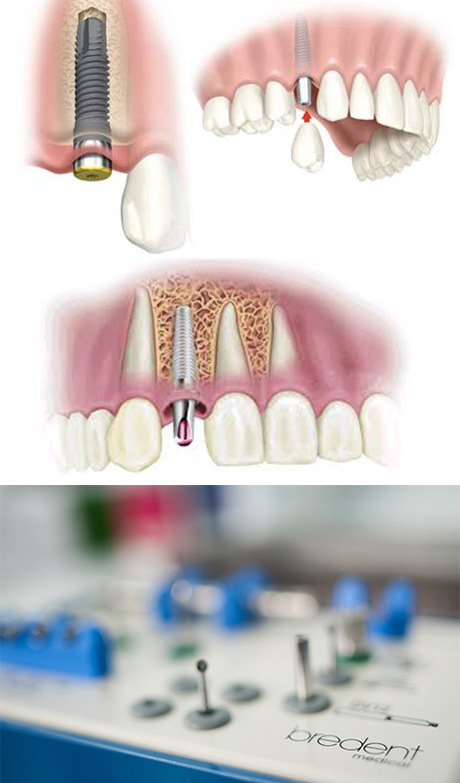
A dental implant is a screw that replaces the root of a lost tooth. The role of dental implants is to support dental prosthesis (crowns, bridges or dentures).
In our practice we use implants produced by Bredent medical GmbH & Co.KG and Sweden&Martina . The dental implant can support either one strong and esthetic porcelain (ceramic) tooth or a dental bridge together with other implants.
Prosthetic Treatments
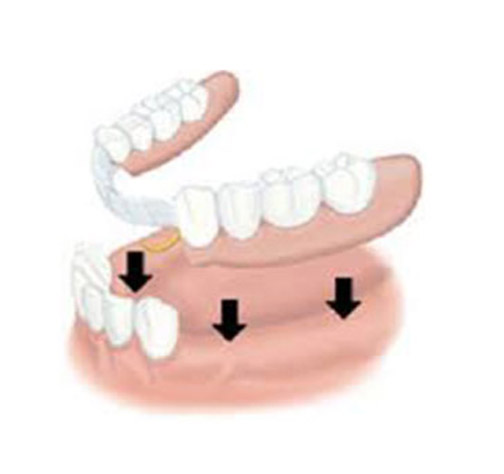
When dental caries have destroyed a large part of the tooth it is necessary to protect the healthy walls, by covering them with a dental crown. However, if the tooth cannot be saved and it is extracted, the empty space can be filled in either with a prosthesis (dental bridge), or with a dental implant. Dental crowns and bridges are fixed dental prostheses. In the case of a large number of missing teeth, the patient will need a denture, which must be removed daily for cleaning (removable dental prosthesis).
That is why it is necessary to protect the healthy walls by covering them with a dental crown.
Periodontal Treatments
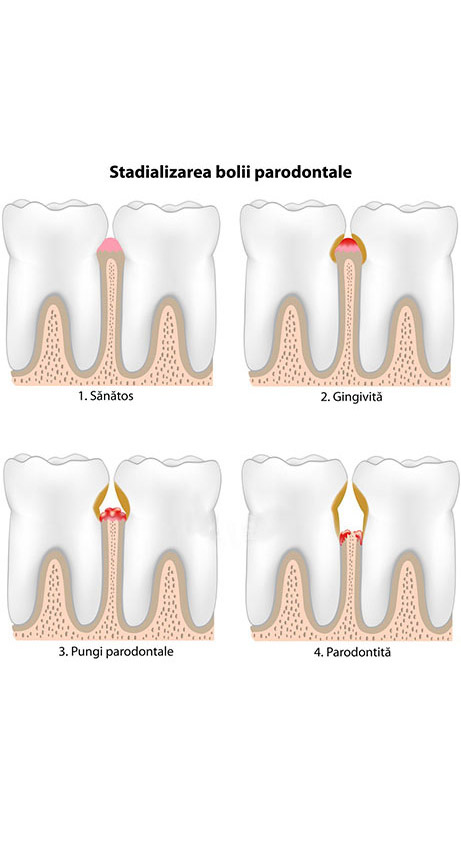
Periodontitis is one of the most dangerous dental diseases, which, without a timely treatment, leads to the loss of the teeth! Although periodontal conditions affect approximately 1 in 3 persons, this disease is treated superficially by most patients.
Periodontics is the dentistry specialty which deals with the treatment of diseases that appear to the tissues supporting the teeth and to the bone around the teeth.
Treatment Of Decays
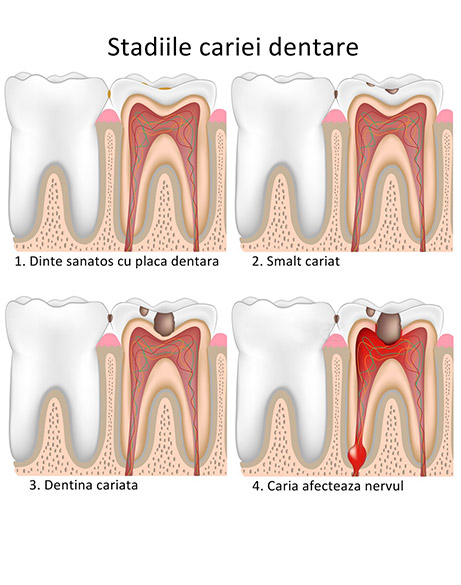
Decays are caused by the accumulation of bacteria which digest the food remaining on the teeth and turns it into acids that attack the teeth. The first affected is the enamel, and then the dentin.
Most often decays develop on the masticatory surfaces of the teeth, in the dental pits and fissures, but they sometimes occur in less visible areas, namely at the points of contact between teeth.
Endodontic Therapy (Root Canal Therapy)
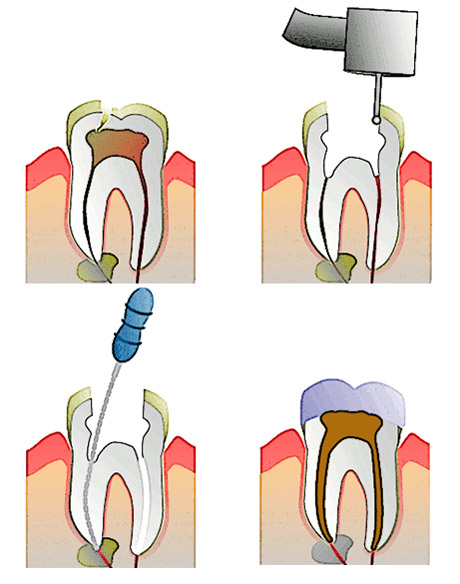
Endodontics is the dental specialty concerned with the dental root canal treatment. Root canal therapy is a complex and time-consuming process which may involve several visits to your dentist, according to the initial condition of the tooth, and to the difficulty of the treatment.
Fortunately, in spite of its complexity, the process is not a painful one as it is performed under local anesthesia.
Prophylactic treatments
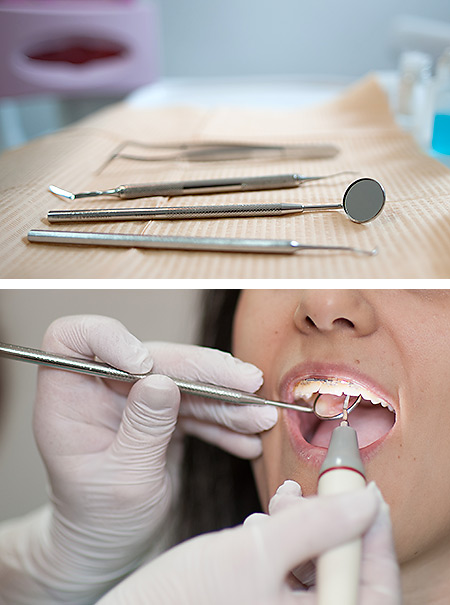
Prophylaxis represents the prevention of dental disorders, yet also the prevention of complications in case of already existing diseases.
Early detection is the key to avoiding complicated and expensive treatments.
Radiology
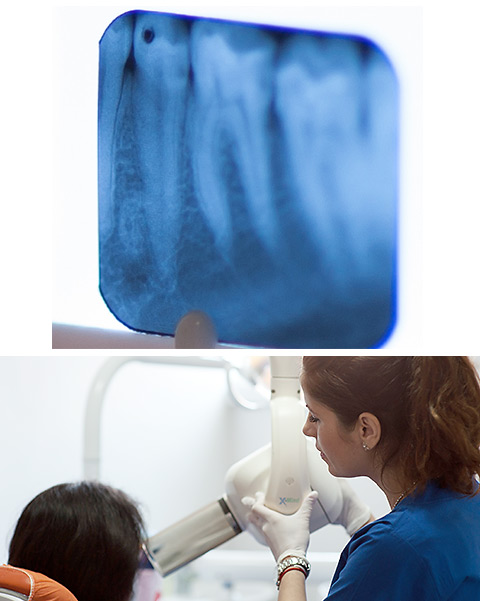
Radiological investigation represents an important aid to the dentist. A correct and complete diagnosis can be determined only after the examination of the x-rays.
In our radiological practice we use the most commonly used type of digital dental radiography, namely the digital retroalveolar radiography which involves a small size film which can show 3-4 teeth.
Obstetrics & Gynecology Services
Specialist Consultation
The gynecology consultation has two equally important components: the anamnesis (discussion with the doctor) represents the first step in trying to establish a diagnosis and it includes questions related to the medical and obstetrical history of you and your family, and the gynecological examination.
It is performed on the gynecological examination table in gynecological position and it consists of a speculum/valves exam and a bimanual exam.
Colposcopy and Videocolposcopy
Colposcopy is a simple, noninvasive, painless procedure performed in an outpatient setting by a gynecologist specialized in the field and it is the examination of the cervix and the vagina by means of a special magnifying instrument called colposcope.
The main purpose is to identify the cervical pathology with evolutionary potential, allowing the visualization of lesions that might not be visible with the naked eye and it also allows the tissue sampling for a histopathological examination.
Ultrasonography
Ultrasonography is the diagnostic imaging technique based on the application of ultrasound and it can be performed either endovaginal or transabdominal.
In our practice we perform endovaginal and transabdominal ultrasonography for both gynecological pathology or folliculometry, and for confirming and monitoring the progress of pregnancy.
By using the cardiotocography, whose result is similar to an EKG, we can assess the fetal condition.
Medical lab sample collection
Pap Smear Test - It is also called cytotumoral cervicovaginal test, and it is widely used for early detection of cervical cancer. Tests on vaginal discharge: both bacteriological microscopic examinations and screening cultures with antibiogram / antifungigram.
Cervical biopsy is indicated in the macroscopic ulcerative or tumoral lesions or in situations with suspicious colposcopic assessments and cytological changes during the cytotumoral examination.
Endometrial biopsy involves the removal of a small piece of tissue from the endometrium for an anatomopathological examination necessary to establish the diagnosis and medical regimen in various disorders.
Specialist Consultation
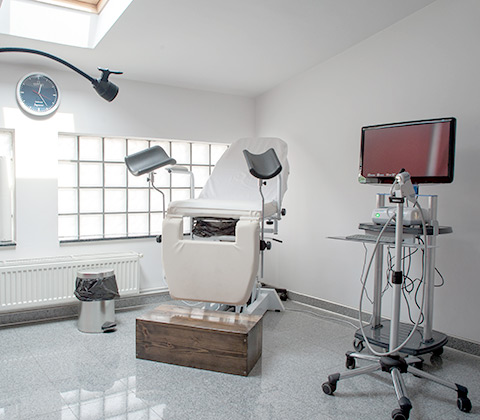
The gynecology consultation has two equally important components: the anamnesis (discussion with the doctor) represents the first step in trying to establish a diagnosis and it includes questions related to the medical and obstetrical history of you and your family, and the gynecological examination.
It is performed on the gynecological examination table in gynecological position and it consists of a speculum/valves exam and a bimanual exam.
Colposcopy and Videocolposcopy
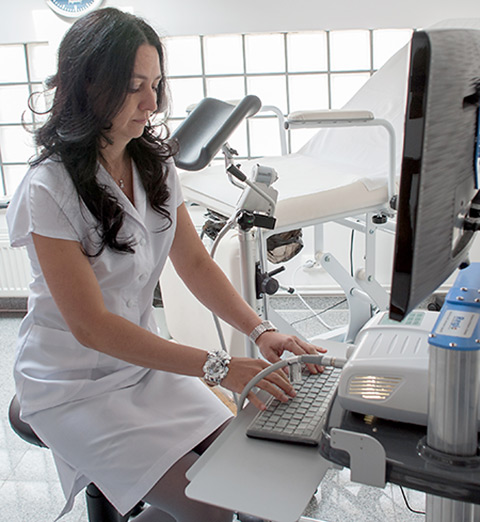
Colposcopy is a simple, noninvasive, painless procedure performed in an outpatient setting by a gynecologist specialized in the field and it is the examination of the cervix and the vagina by means of a special magnifying instrument called colposcope.
The main purpose is to identify the cervical pathology with evolutionary potential, allowing the visualization of lesions that might not be visible with the naked eye and it also allows the tissue sampling for a histopathological examination.
Ultrasonography
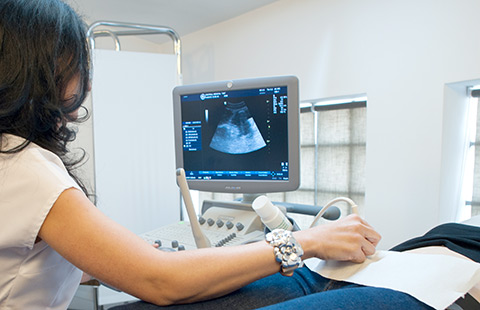
Ultrasonography is the diagnostic imaging technique based on the application of ultrasound and it can be performed either endovaginal or transabdominal.
Cardiotocography (CTG) is a technical means of recording the fetal heartbeat and the uterine contractions during pregnancy by means of an electronic fetal monitor (EFM).
In our practice we perform endovaginal and transabdominal ultrasonography for both gynecological pathology or folliculometry, and for confirming and monitoring the progress of pregnancy.
By using the cardiotocography, whose result is similar to an EKG, we can assess the fetal condition.
Medical lab sample collection
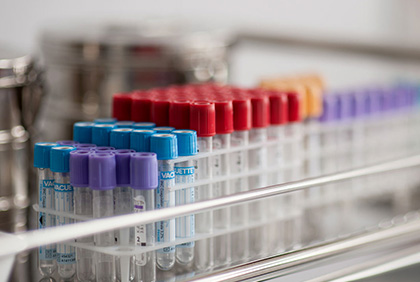
Pap Smear Test - It is also called cytotumoral cervicovaginal test, and it is widely used for early detection of cervical cancer.
Tests on vaginal discharge: both bacteriological microscopic examinations and screening cultures with antibiogram / antifungigram.
Cervical biopsy is indicated in the macroscopic ulcerative or tumoral lesions or in situations with suspicious colposcopic assessments and cytological changes during the cytotumoral examination Endometrial biopsy involves the removal of a small piece of tissue from the endometrium for an anatomopathological examination necessary to establish the diagnosis and medical regimen in various disorders.
Location
Our headquarters is: Craiova, Street Brazda lui Novac, nr. 5


